NFT is a unique digital item to have demonstrable ownership. Usually, it is used for digital art. Ethereum-powered projects like SuperRare are harnessing the power of blockchain to create digital art that has digital scarcity and true ownership, thus creating a whole new market for artists and collectors in the digital space.
Built on NEAR, Paras: Digital Art Card is an NFT marketplace that is already available for use. It offers much cheaper NFT mining fees than are possible on Ethereum, allowing artists to create without being limited by high on-chain fees.
In this article, we are going to discuss NFTs, the ways of creating, selling, and buying. And will give you a step-by-step guide on how to develop an NFT marketplace from scratch with a detailed estimate.
Table of Contents
- 1 What is NFT?
- 2 Why should you invest in NFT marketplace development today?
- 3 What are the most popular NFT marketplaces?
- 4 Main features of NFT marketplaces you should keep in mind
- 5 How to develop your own NFT marketplace step-by-step
- 6 How much does it cost to build an NFT marketplace?
- 7 Download our detailed estimate: NFT Marketplace Development
- 8 How much does the smart contract deployment, the key behind NFT tokens, cost?
- 9 How to earn money with the NFT marketplace?
What is NFT?
Non-fungible tokens, or NFTs, are pieces of digital content associated with the blockchain, the digital database underlying cryptocurrencies such as Bitcoin and Ethereum. Unlike NFT, these assets are fungible, that is, they can be replaced or exchanged for another identical one of the same value as a dollar bill. On the other hand, NFTs are unique and not interchangeable, which means that no two NFTs are alike.
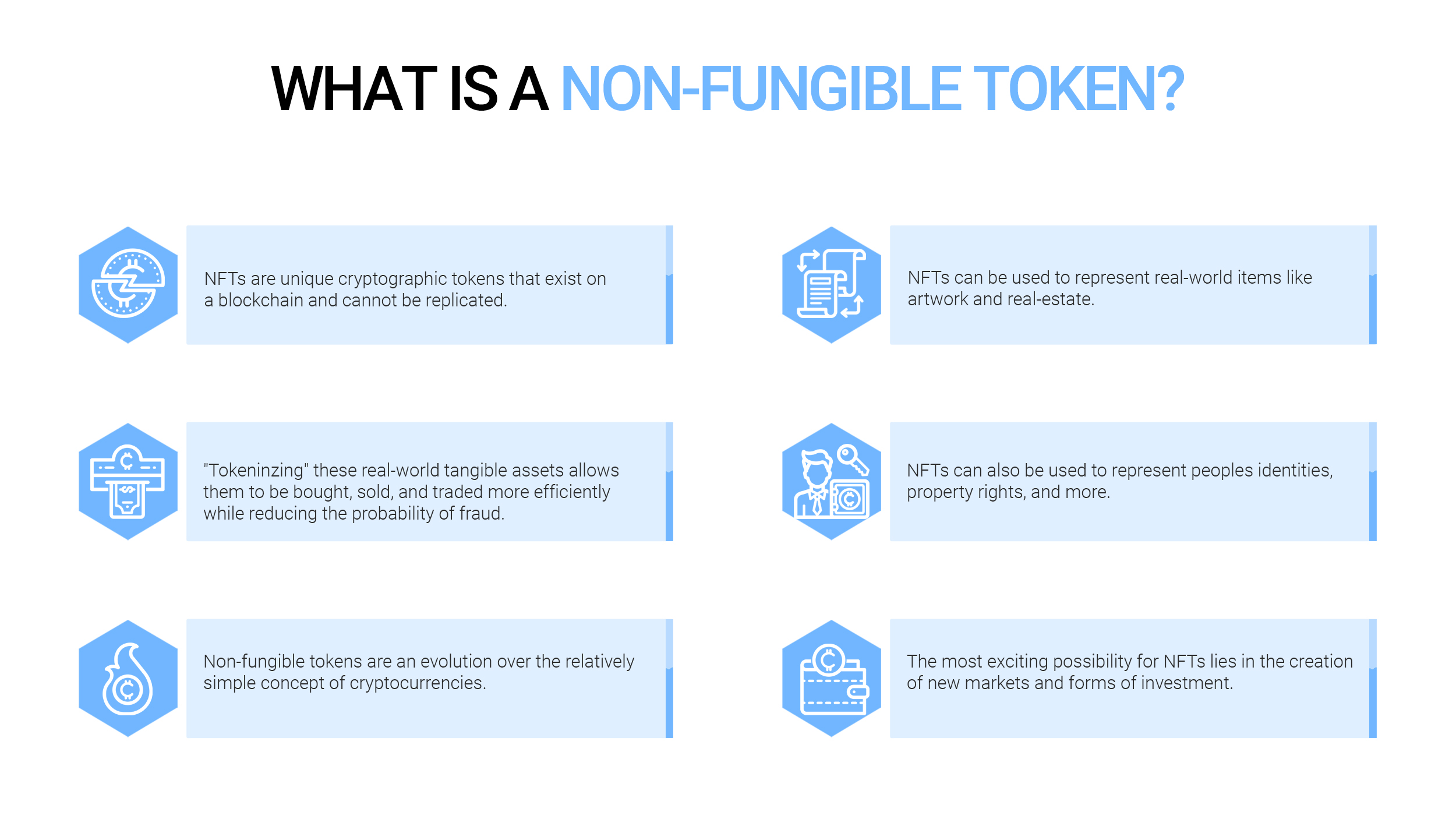
How to buy NFTs
There are plenty of marketplaces that make it possible to buy NFTs. I.e., Nifty Gateway, MakersPlace, OpenSea, Decentraland, etc. There are also niche ones for more specific types of NFTs, such as NBA Top Shot for basketball videos, or Valuables for auctioned tweets, such as Dorsey’s, which are currently up for auction.
But be careful with fees. Some marketplaces charge a fee for ‘gas’, which is the energy required to complete a transaction on the blockchain. Other fees may include the cost of converting dollars to Ethereum (the currency most commonly used to buy NFTs) and closing costs.
How to sell NFTs
The process of NFTs selling varies from one marketplace to another. In general, you should upload your content on the platform, then follow the instructions to turn it in the NFT. You will have the opportunity to write the description and set the desired price. Commonly, NFTs are being sold using ethereum. But there are other options. I.e., WAX or Flow.
Also, you need to remember that some of the websites charge a fee. Thus, you should read the terms carefully.
How to make an NFT?
Everyone can create an NFT. The only thing you need is a cryptocurrency wallet, a small purchase of ethereum, and a connection to an NFT marketplace where you’ll be able to upload and turn the content into an NFT or crypto art.
Why should you invest in NFT marketplace development today?
The market capitalization of NFT is growing rapidly, increasing almost tenfold between 2018 and 2020. The source of these numbers claims that achieving market capitalization for such a young market is a ‘difficult exercise’ and even mentions that this particular estimate is ‘conservative’. The volatility of events in this new market can also be seen in the volume of NFT transactions for different segments, as well as in the size of the NFT market in the same segments: transactions decreased for games, while value increased for art. The latter aspect was showcased in early 2021, when an NFT digital artwork was auctioned for approximately $69 million, making it the third-highest value artwork ever sold by a living artist.
One more interesting number. As of April 12, 2021, about 23.7 thousand NFTs were sold in the art segment in the previous 30 days. As of July 15, 2021, the total number of sales in 30 days was about 45 thousand. Thus, you can see that the numbers have increased rapidly.
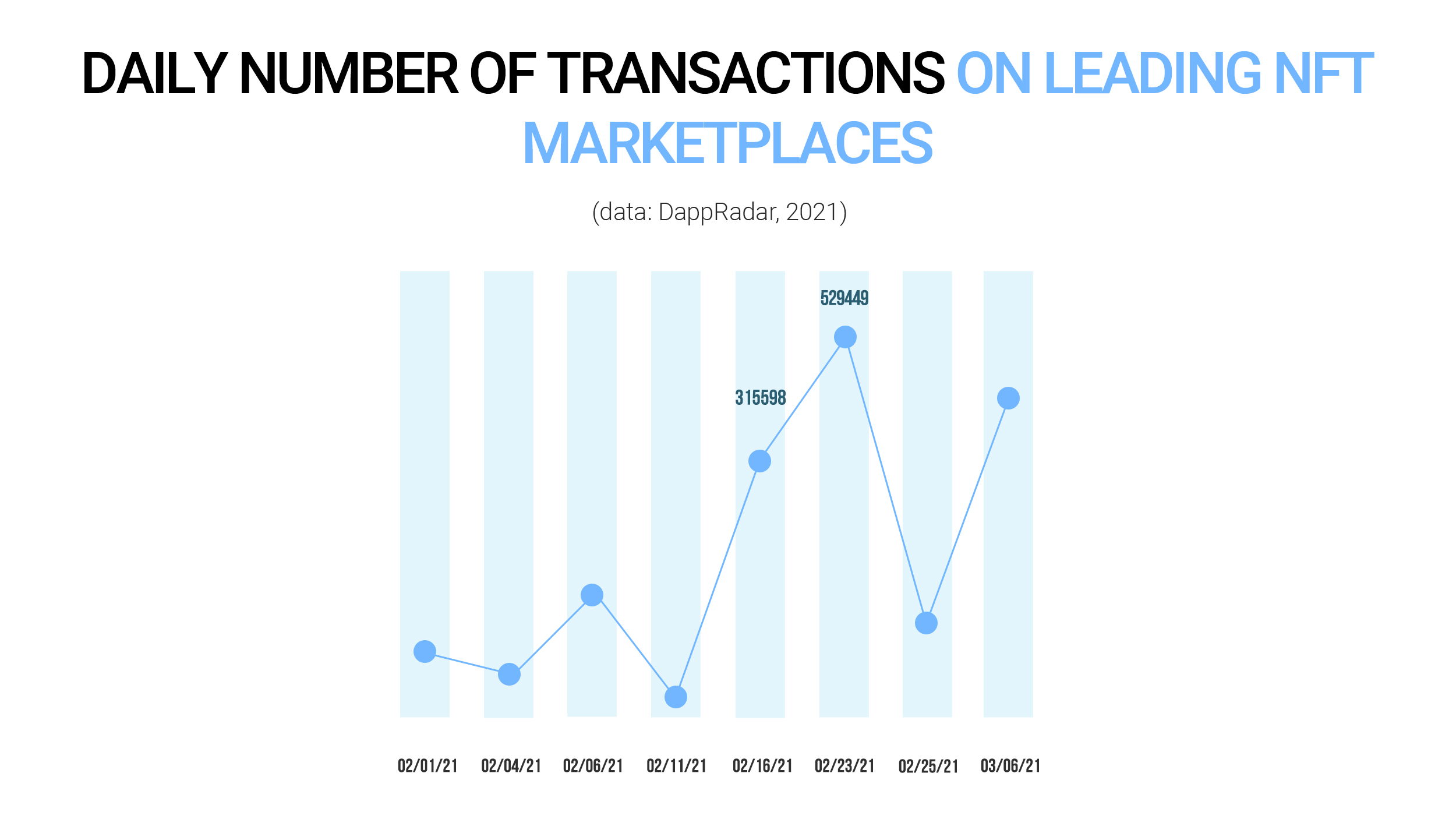
It seems like 2020 was a good year for NFTs, but from what point of view? Finance, adoption, number of users? Let’s discuss it in detail. So, the number of active wallets increased from 112,731 in 2019 to 222,179 in 2020 (+97,09%). The number of buyers increased from 44,644 to 74,529 and the number of sellers increased from 25,264 to 31,504. At the same time, total volume traded in NFT grew $62,862,687 to $250,846,205 (+299%).
The number of active Smart Contracts is another indicator by which to assess the overall health of the NFT Industry. We have gone from around 200 active Smart Contacts in the middle of 2019 to almost 500 a year later. Indicating the amount of really active projects almost doubled between 2019 and 2020, a sign of very strong growth and development in the Ecosystem.
Besides, we also note that the average NFT transaction volume per week is extremely low compared to the total transaction volume on the Ethereum blockchain; 120,000 NFT TX for over 5,000,000 transactions per week.
| 2018 | 2019 | 2020 | |
| Total number of NFT transactions | 8 553 640 | 9 458 915 | 6 618 250 |
| The total volume of transactions on the Ethereum Blockchain | 254 349 235 | 242 286 953 | 330 200 264 |
| Percentage of NFT transactions across total Ethereum transactions | 3,4% | 3,9% | 2% |
NFT transaction volume in 2020 has dropped significantly compared to previous years. This relative decline is attributed to the rise of side chains that allow publishers of projects and crypto games to offer their players a large number of off-chain interactions without high costs and delays and interact with the main chain only for key transactions such as assets trading from the user’s wallet.
The largest NFT marketplace by total trading volume is NBA Top Shot, with a consistent trading volume of over $ 600 million in mid-2021. However, if you look only at recent sales, OpenSea, which costs $70 million to $90 million in bids every 30 days, will rank #1 in mid-2021.
How to Create a Decentralized Cryptocurrency Exchange: 6-Steps Guide
What are the most popular NFT marketplaces?
NFT marketplaces will quickly gain prominence in 2021 and NFTs are emerging as a new asset class to take care of in the crypto space. Simply put, such platforms provide an opportunity for buying, selling, and trading NFT tokens.
So, let’s take a look at the most popular marketplaces.
Opensea
OpenSea is the first and largest peer-to-peer NFT marketplace for cryptocurrency commodities. It’s like an eBay on the blockchain. Available products include collectibles, in-game items, and other blockchain-protected virtual goods. At OpenSea, you can buy, sell and trade any of these items with anyone in the world. OpenSea is currently the largest shared marketplace for user-owned digital items with the widest range of categories and currently has over 4 million products.
SuperRare
SuperRare is a social portal that encourages the creation and collecting of crypto art. SuperRare has worked with artists since its inception and tries to listen to the needs of artists and collectors.
Decentraland Marketplace
Decentraland is a marketplace powered by the Ethereum blockchain. In the Decentraland world, customers can create, experience, and monetize what they create and own. In the shared virtual world, users can buy land, known as “parcels,” which are recorded in a ledger supported by the blockchain.
Ghost market
Ghost Market is the world’s first NFT gateway marketplace. It allows you to open, buy and sell NFTs on both NEO blockchains and Phantasma. Phantasma is a fast, secure, and scalable blockchain built with NFT in mind, so it has many built-in NFT features by default (chasing, batch chasing, dispatch, etc).
Main features of NFT marketplaces you should keep in mind
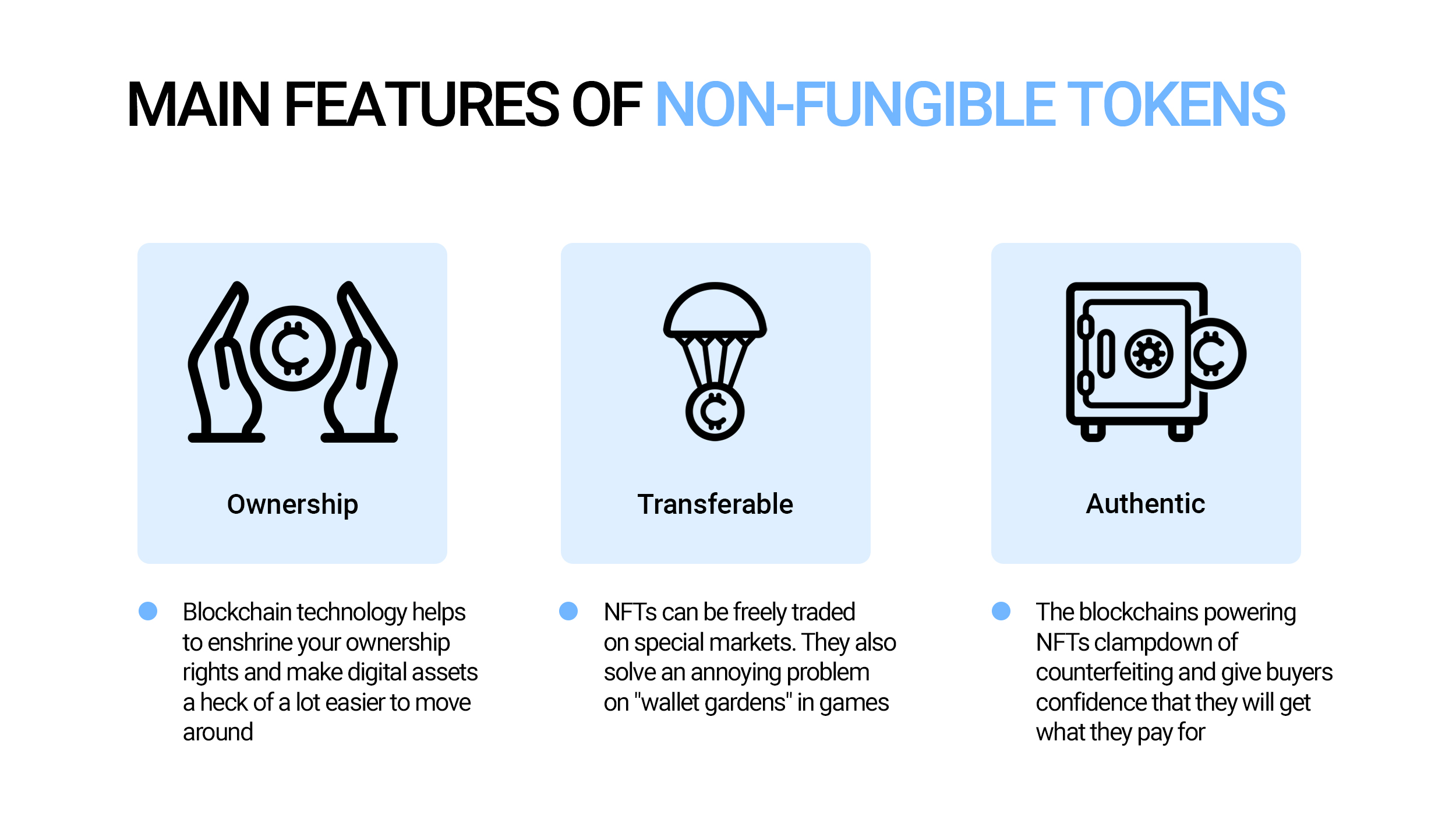
- Security
When it comes to financing, security cannot be ignored. Blockchain is a pretty solid technology that has built-in security mechanisms, but additional features never get in the way. You may need tools to inspect and detect malicious content that could harm your users. You can also check additional boxes during the process of publishing or buying tokens so that users can be sure of their authenticity and reliability. The user profile is also an important security element. Implement at least basic KYC (know your customer). For example, OpenSea encourages users to add links to their social media accounts to help NFT buyers learn more about the creators.
- Transparency
Because of immutability and transparency, Blockchain gives a clear picture of the transactions’ history that took place on the marketplace. So, Blockchain ensures a transparent and error-free payment process.
- Smart Contracts
Smart contracts are digitally signed agreements that prevent any kind of fraud and exclude commissions from third-party payment systems. They performed automatically, written in lines of code on the blockchain network, and publicly stored. Smart contracts operate under certain conditions that users agree to. If these conditions are met, the terms of the agreement are automatically executed.
- Decentralization
The decentralized nature of blockchain implies the following functions in the e-commerce marketplace system: nothing is kept centrally; all transaction data are copied and distributed over a network of computers; whenever a new block is added to the blockchain, each computer on the network updates its blockchain to reflect the change; in the event of a hacker attack, only one copy of the information will be compromised.
Thus, market governance and control are limited: you cannot set any rules or conditions, such as price control.
- Payments and Fees
NFT marketplaces offer direct payment by cryptocurrency. Payments have to be instant. At the same time, personal information and credit card details shouldn’t be required.
How to develop your own NFT marketplace step-by-step
With the support of an experienced development team, you can create an NFT marketplace with any functionality from scratch. While this option will cost you more, it has many benefits. At the very least, you are not limited by the capabilities of the SDK. You can implement any features you want and create a more sophisticated solution that will help you stand out from the competition and attract more customers.
The custom development process for the NFT marketplace consists of the following steps:
Step #1: Define your niche
To increase your chances of success, it is better to bet on a vertical market rather than a horizontal one. Horizontal market suppliers sell everything to everyone. Vertical market service providers specialize in providing services or products that meet the needs of a specific target group. In other words, instead of trying to sell a lot to many like Amazon and Bonanza do, focus on a specific set of products or services.
Step #2: Choose user roles
Commonly, NFT marketplaces have three user roles. They are artists, buyers, and administrators.
Step #3: Project specification
The site development stage begins with project documentation. While it may seem like a boring and repetitive task, detailed documentation will save you a lot of time and money down the road. If you are hiring full-time tech specialists, this is not that important. But if you choose to manage a remote development team, documentation becomes an important roadmap.
Step #4:The development stage
This is the stage in bringing your idea to life. Choosing the best framework for their project, dedicated software developers implement all the necessary functions on the client-side. The main task here is to ensure fast platform operation, good performance, and reliability.
Step #5: Implement smart contracts token generator
The back-end is the logic of your platform. When designing an NFT marketplace, this step will be different from a similar standard custom design step. The fact is this web app is a decentralized platform, so most of the data is verified on the blockchain. For example, Ethereum allows the network to run certain scripts to make the application decentralized, so most of the internal logic is passed on to the decentralized part.
Step #6: Test and deploy
Never skip this step. Finding and fixing bugs quickly ensures your product is ready to launch. Additionally, software testing helps ensure that your platform is performing as expected and meets the original project requirements. Remember that a properly tested software product provides reliability, security, and high performance.
How much does it cost to build an NFT marketplace?
The final price of the NFT marketplace development depends on several factors. The main of them are geography and manpower. Moreover, you need to understand that Ethereum Dapp development is a niche skill. Thus, it may be difficult to find skilled developers. That’s why the price may be higher.
| Scope | Approx time, hours |
| 1. Project Start | |
| Initial backlog preparation | 16 |
| Project Schedule Preparation | 12 |
| Staging environment setup | 6 |
| 2. Development Section (Back-end) | |
| Backend setup (Node.js, Express.js, Postgress, Docker compose) | 16 |
| AWS instance, CI/CD | 25 |
| Database structure | 33 |
| User CRUD | 33 |
| Admin authorization | 33 |
| Roles permissions | 17 |
| Answer layer | 40 |
| Implement transaction logic approvement | 33 |
| NFT integration | 64 |
| 3. Development Section (Front-end) | |
| Project set up (Redux/Redux Thunk) | 8 |
| Homepage | 28 |
| Wallet page | 8 |
| Earn page | 24 |
| Profile page | 20 |
| History page | 20 |
| NFT page | 36 |
| 4. Stabilization and Delivery | |
| Prepare deployment docs | 13 |
| Prepare description docs | 13 |
| Production deployment (AWS EC2 + CI) | 17 |
| 5. Project management | |
| Backlog elaboration and maintenance | 24 |
| Planning meetings, review meetings | 24 |
| Project Management and communication | 24 |
| Quality Assurance, hours: | 120 |
| Total Development, hours: | 481 |
| Project Management, hours: | 106 |
| Total | 707 |
How much does the smart contract deployment, the key behind NFT tokens, cost?
The operation of NFTs depends on smart contracts. The goal of the smart contracts on the blockchain is to allow users to create special tokens of this type to represent what they want with them. Almost anything can be digitally represented, and blockchain is perfect for that.
One more thing you should notice is that each transaction made in the blockchain costs Gas. Gas is the computing power needed to validate and process your transactions. The cost of 1 gas is called the gas price. In turn, Gas prices are quoted in Gwei units, which is 0.000000001ETH.
It is worth saying, Gas prices change frequently. Moreover, they are not set by developers or miners. It’s all about the number of transactions. I.e., if many people ask for transaction confirmation, gas prices will be high because miners will choose who pays more, and the average gas price of some of the most recent transactions will be the new gas price. Thus, the gas price will be higher than the previous one. Sometimes, when the Ethereum network is heavily clogged, it can cost over $140 to create one NFT on the blockchain. Many users complain about this, and rightfully so.
So, how much does the smart contract deployment cost? Everything depends on the factors such as the amount of data you store on the blockchain and, for sure, the gas fee.
The deployment consists of three transactions, for each of them you have to pay:
- The initialization transaction is the most expensive operation. 536467 gas was required to deploy the contract and execute the constructor code. At 20 Gwei per gas, contract deployment costs 0.01072934 ether or about $3.21 at the current exchange rate of $300 per ETH.
- In the second transaction, the sender calls with confirmation. Transaction cost is 0.00093492 Ether or $0.28 at $300 per ETH.
- In the third transaction, the arbiter calls for confirmation, and the funds are distributed to the recipient. Transaction cost is 0.00164754 ether or $0.49 at $300 per ETH.
Thus, a simple smart contract without complex business logic costs around $14,000. More advanced contracts cost up to $45,000 and up. It is not uncommon for large organizations with specialized knowledge to ask for up to $100,000. The complexity of your contract determines the price.
How to earn money with the NFT marketplace?
NFT industry includes three types of players. Each of them has different issues and different monetization models to understand them it’s necessary to answer several questions. So, let’s look through all of them.
Trader
Is trading NFT a stable activity nowadays? What revenue can be generated?
Project
How are projects funded by themselves, other than traditional funding? What projects work best? What is their source of income?
Artist
Can artists make a living by selling their art through the blockchain? How much can a popular crypto artist make?
If you would like to create your own NFT marketplace, the Code&Care team has several options, including custom development and building a marketplace based on the OpenSea SDK. We are not limited to the types of digital assets to develop an NFT platform that meets all your requirements.

Benefits of Blockchain in Insurance: Use Cases and Main Features
All-in-One Guide to Telemedicine App Development
How to create a fitness app: All you need to know
Web Application Development Cost: The Full Guide On Your Project Price

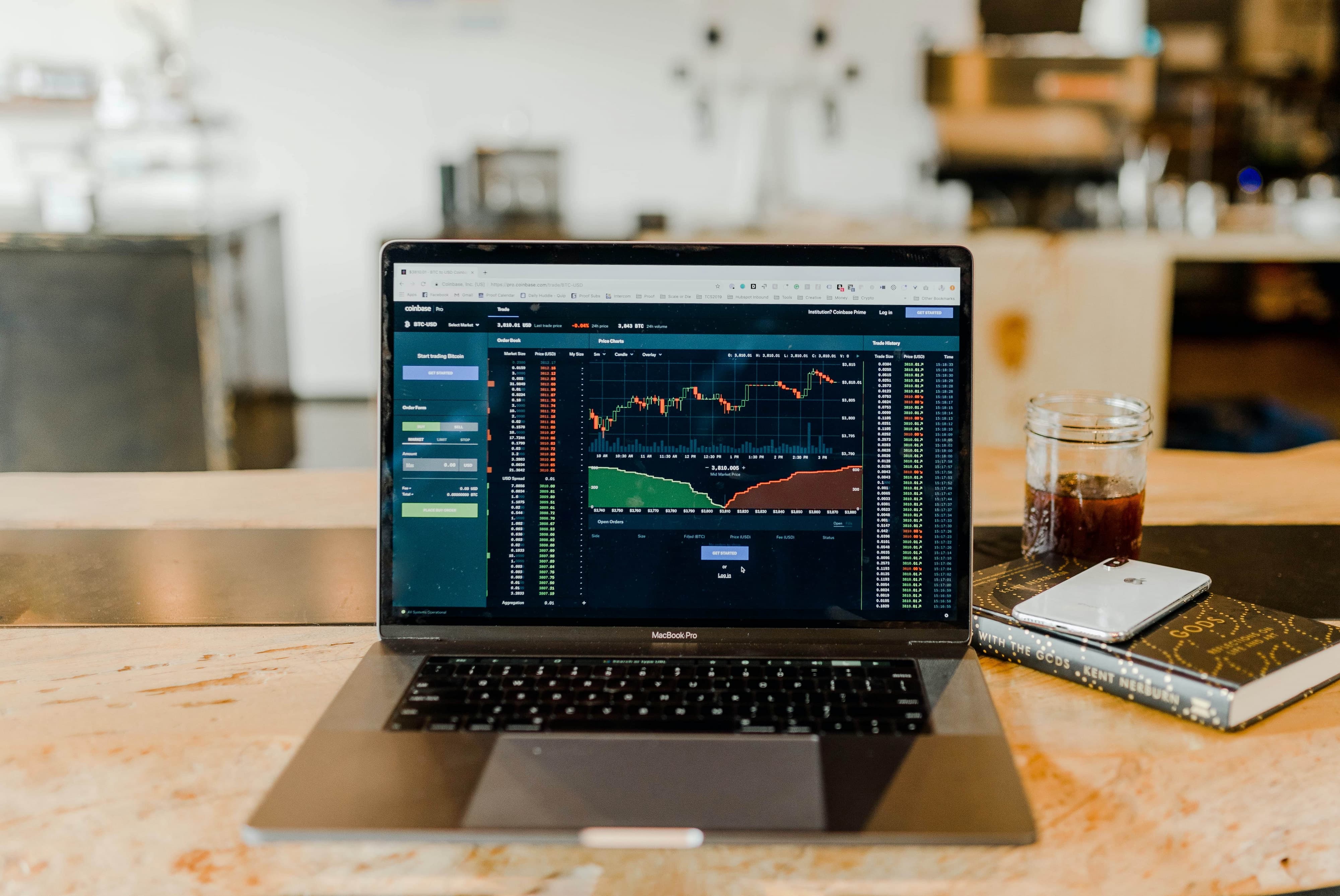






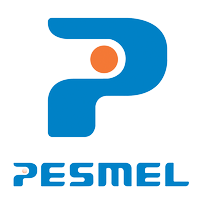





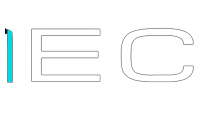

Popular
Latest